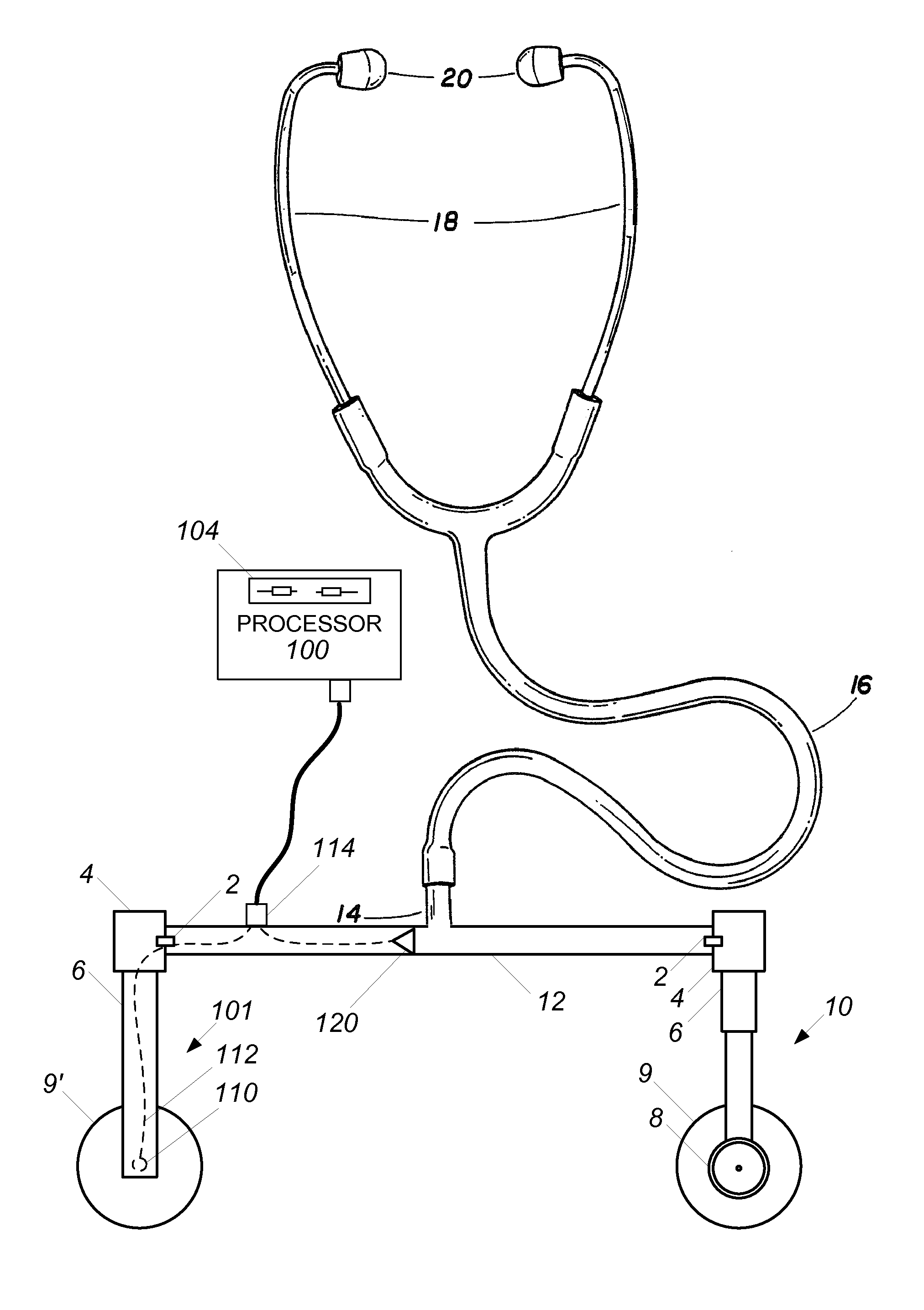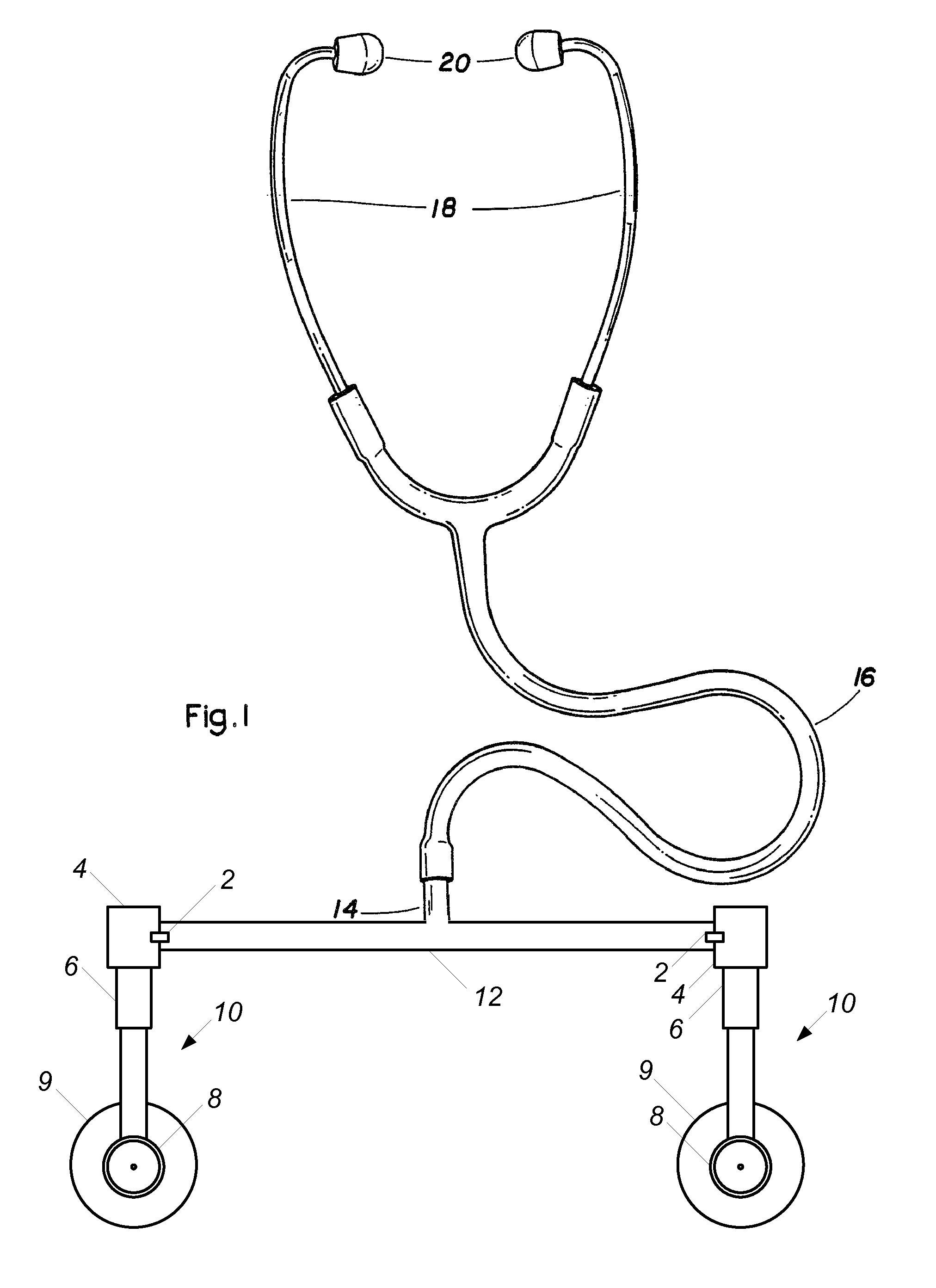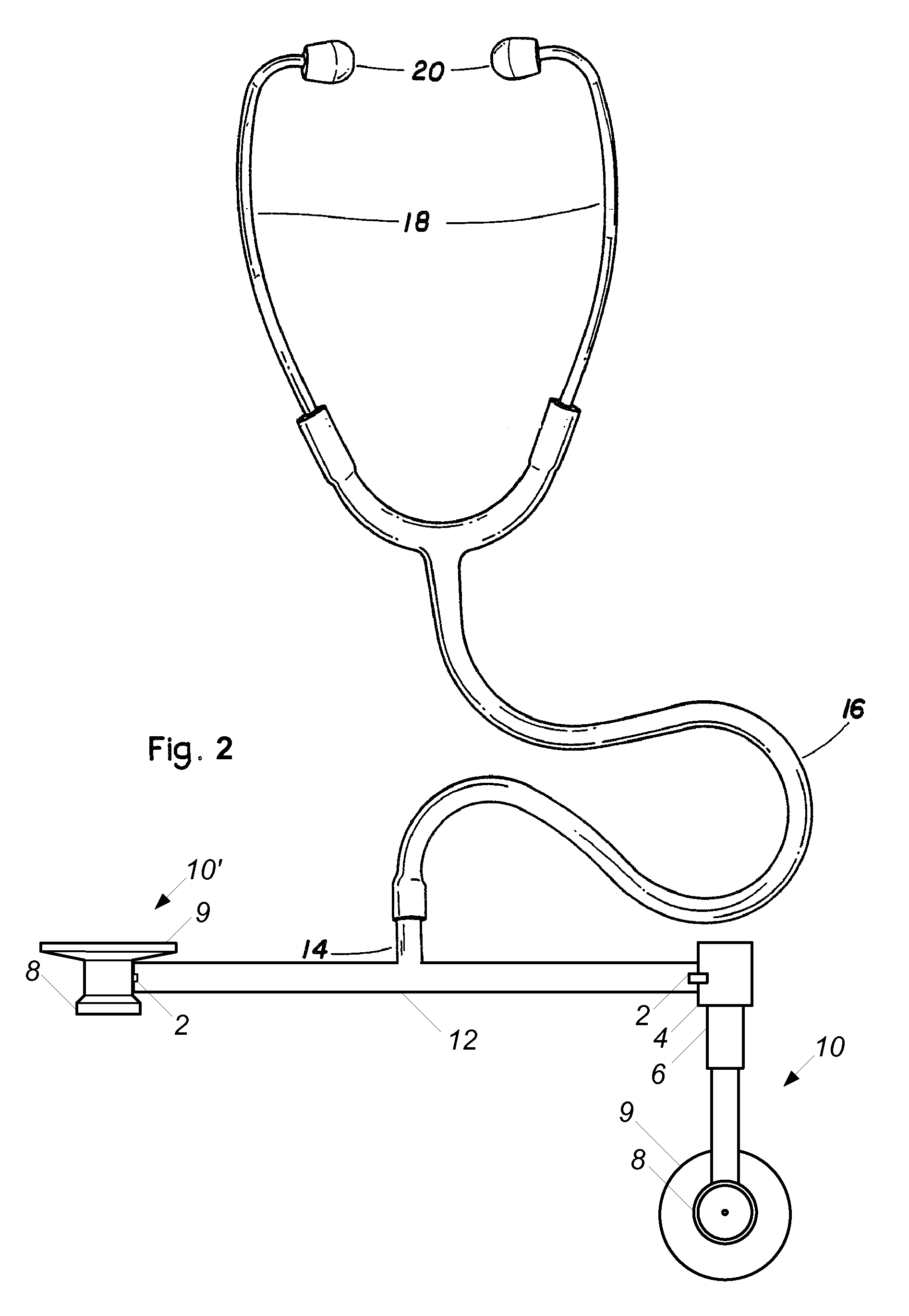Dual-sensor stethoscope with electronic sensor
a stethoscope and electronic sensor technology, applied in the field of dual-sensor stethoscopes, can solve the problems of affecting the use of existing stethoscopes, affecting the safety of patients, so as to prevent any possible contamination of the sensor, promote anti-sepsis, and advanced audio processing.
- Summary
- Abstract
- Description
- Claims
- Application Information
AI Technical Summary
Benefits of technology
Problems solved by technology
Method used
Image
Examples
Embodiment Construction
[0024]As used herein, the terms head, sensor or sensor head refer to a stethoscope sensor and its attachment means that may comprise: a mechanical diaphragm, bell, or combination of the two, or an electronic stethoscope sensor incorporating a microphone; the terms rotate and rotatable refer to movement about an actual or virtual pivot point; and the terms tube and tubular refer to any hollow structure for conduction of sound waves or any structure for routing of electronic wiring and is not limited to circular cross-sections.
[0025]As illustrated in FIG. 1, an embodiment of a stethoscope includes conventional eartips 20 and earpieces 18 connected to common sound conduction tube 16. In place of a conventional stethoscope head at the end of the tube 16, a substantially rigid structure is used to mount two sensors 10 to the stethoscope. In use, a clinician can handle the rigid structure to position the sensors 10 and thus avoid contamination of the sensors 10 from any pathogens that may...
PUM
 Login to View More
Login to View More Abstract
Description
Claims
Application Information
 Login to View More
Login to View More - R&D
- Intellectual Property
- Life Sciences
- Materials
- Tech Scout
- Unparalleled Data Quality
- Higher Quality Content
- 60% Fewer Hallucinations
Browse by: Latest US Patents, China's latest patents, Technical Efficacy Thesaurus, Application Domain, Technology Topic, Popular Technical Reports.
© 2025 PatSnap. All rights reserved.Legal|Privacy policy|Modern Slavery Act Transparency Statement|Sitemap|About US| Contact US: help@patsnap.com



